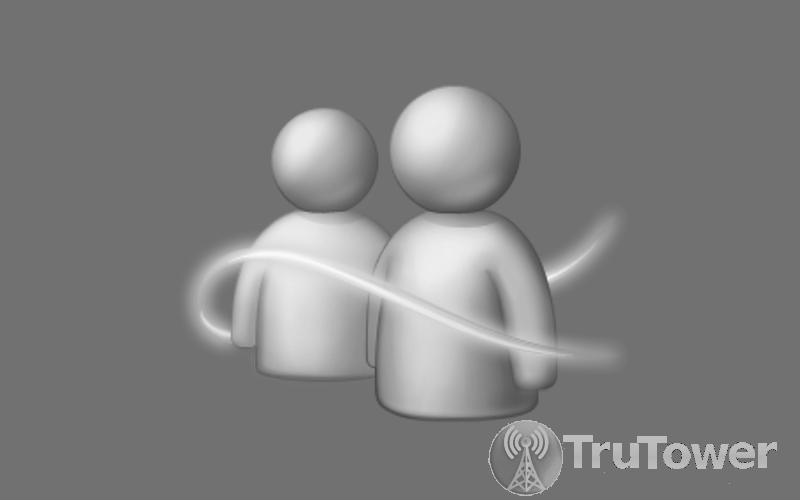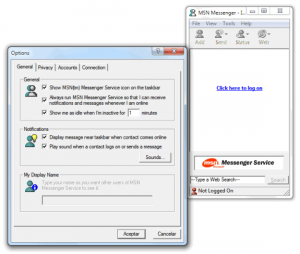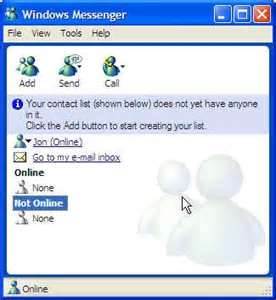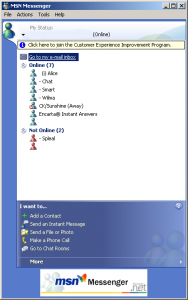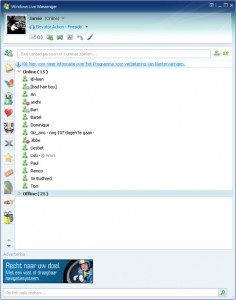Windows Live Messenger is officially being retired in favor of Skype on March 15th after more than a decade of availability. To commemorate the announcement of its sunset and the application’s influence on the evolution of the instant messaging market, we’ve decided to take a brief look back at its storied past.
Windows Live Messenger carried the original moniker of “MSN Messenger Service,” and was originally released on July 22, 1999. One of its early spotlight features was allowing users to chat with AOL IM (AIM) users, a product operated by the former America Online, a feature later blocked by America Online. MSN Messenger required its users to sign up for a .Net Passport (now called a “Windows Live ID” and soon simply a “Microsoft Account” or “Skype ID”) in order to be able to sign in and use the service. The first version simply allowed back and forth communication, and had not yet matured to allow gaming, video calls, or voice calls. In fact, the first version did not even include rotating advertising banners (which did not debut until version 2.0).
In addition to the advertising banner, Microsoft debuted the ability to customize the chat Window when it released version 2.0 of the software on November 16, 1999. By then, MSN Messenger had started to amass high popularity. From there, the service only kept growing. Version 3.0 saw the release of audio phone capabilities powered by Net2Phone. This integrated capability made MSN Messenger was one of the first VoIP apps in existence, and it launched a wide array of competing VoIP apps. Version 3.0’s influence can still be felt and seen in many VoIP solutions to this day.
From that point on, MSN Messenger growth — both in users and in features — skyrocketed. Version 4.0 brought contact grouping abilities, true VoIP capabilities, and a name change; Microsoft dropped the “Service” at the end of the name and simply called the service “MSN Messenger” from that point on. Microsoft had intended to replace MSN Messenger with Windows Messenger when Windows XP was first released, but the Windows Messenger service never took hold and as of Version 5.0 — which incorporated a Windows Media Player plugin — MSN Messenger became the most popular and most used IM service on Windows XP and earlier systems.
The next versions of MSN Messenger, the version 6.0 series, brought a number of key features to the IM service, including emoticons, theme options, avatars, and backgrounds. The first version in series 6 was released on July 17, 2003. Nearly two years later, version 7.0 brought wink features, handwriting recognition, and Xbox Live support. Part of this series, version 7.5, was the very last version of MSN Messenger before Windows Live Messenger (which was still numbered 8.0 despite the name change and would be the last version of the IM application to carry a version number in the name) was released in Beta 1 on December 13, 2005 and officially on June 19 the next year. The 8 series introduced a large number of unique features, most notably the contact window offline messaging, and the ability to download updates via Microsoft Update, among a number of other features and tweaks. Version 8.0 and version 8.5 were also known as Wave 1 and Wave 2, respectively.
Windows Live Messenger 2009 (Wave 3) was originally called version 9.0 but was later renamed and also carried the version number of 14.0, a change Microsoft implemented to align the IM service with their other Windows Live services. During the nearly two years it was available, Windows Live Messenger 2009 went through a number of builds and saw life on three different Windows operating systems, going from Windows Vista to Windows 7 officially while maintaining its usability on Windows XP.
On June 24, 2010, Wave 4 — Windows Live 2011 — was released in beta. During this version’s lifetime, it saw Windows 7 become the first Windows OS to dominate XP, and brought a number of notable features to the Windows Live table, including tabbed conversations, HD video chat and messaging, Facebook and SkyDrive photo comment support, and Facebook chat. In addition, while this version was available for PC’s, mobile applications were released for Windows Phone, iOS, BlackBerry, and Symbian devices. A version for Zune was also available by the time the final version of Wave 4 was released on September 30, 2011.
Windows Live Messenger was bundled inside Microsoft’s Windows Live Essentials suite with the release of Wave 5. Of course, this was the final version of the Messenger app that is currently available, and will be replaced by Skype on March 15, 2013 for everyone except for those in mainland China. While Skype may be an arguably better service than Windows Live Messenger overall, there are many who are nostalgic over the application and its loss comes as an unfortunate but necessary blow to others. Still, for those who might be feeling the loss, there is some comfort in knowing that you can relive the glory days of MSN Messenger simply by booting up your old Windows 98 computer, starting the old MSN Messenger program, and watching the familiar blue and green figures spin with content in a dance that will not end until the application invariably fails to connect to the server.

